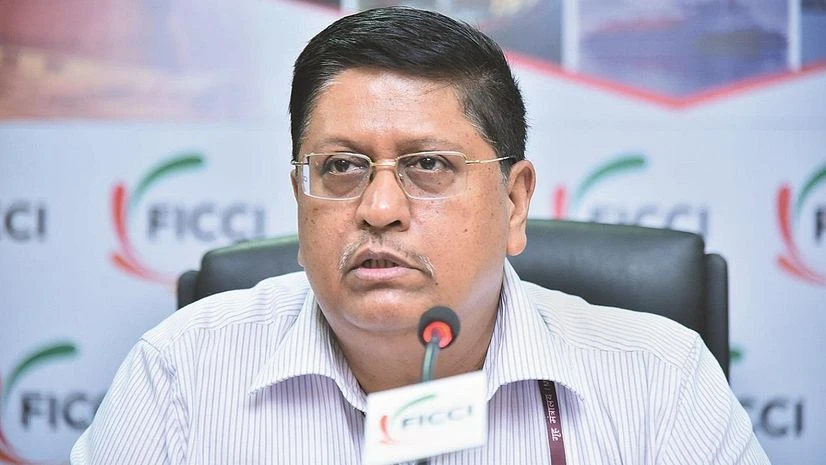India’s transport, for both freight and passengers, has historically been defined by roadways and railways, unlike Europe, where waterways have been an engine of economic growth for the countries. This can now change with the focus on river economy development projects increasing through PM Gati Shakti, Sanjay Bandopadhyaya, chairman of Inland Waterways Authority of India (IWAI), tells Dhruvaksh Saha in an interview. Development of inland waterways, he believes, aligns with India’s twin targets of reducing logistics cost and carbon emission. Edited excerpts:
With infrastructure in focus, how has the inland waterways economy grown?
The total traffic on national waterways increased to 126 million tonnes (mt) in 2022-23 from merely 30 mt in 2014-15, with a compound annual growth rate (CAGR) of almost 20 per cent. We expect cargo to reach 200 mt by 2030 and 500 mt by 2047. We already have 24 operational waterways, which we achieved much ahead of our target of 2030, and are also working on regional connectivity with Bhutan, Myanmar, Bangladesh and Nepal through the waterway network.
In what ways is Gati Shakti impacting water transport projects in India?
Gati Shakti is the greatest boon for inland water transport, because earlier, water transport did not invite so much focus. It is the most efficient form of transport historically because it consumes the least energy and if you promote it, maximum emission of carbon dioxide is reduced. Water transport is now integrating with railways and roads.
Also Read
In the past, numerous projects would either not get approvals or would get stuck. Has that changed?
There is a realisation that water transport is the most efficient form of transport. So, it should get a higher priority. For example, the government’s focus now is on the evacuation of coal from Talcher to the ports of Dhamra and Paradip (Odisha). There was limitation of land acquisition and other things; hence, road and rail connectivity is limited. So, now, the government has told us that water transport has to be developed so that this coal is evacuated.
Coal mines will develop and the power plants, which require thermal coal, will procure it through water transport and coastal shipping in Odisha. This will then move to places in South India and the western region through the waterways. Similarly, coking coal can come to the industrial area of Kalinganagar in Odisha.
We have seen the Ganga Vilas cruise as well. The Prime Minister himself flagged it off. It is the longest river cruise in the world and is booked for two years.
How is the private sector reacting to the push for developing inland waterways?
In Maharashtra, many projects have attracted the private sector’s interest. The sector has shown the initiative to invest in waterways. In Gujarat as well there is a large requirement of coal and iron ore from the port to the plant situated on the riverfront, and we are seeing an increase in traffic.
What will be the public private partnership model for waterways?
Wherever private investment is available, the government should not invest money. Ours is a new sector. The present government has given a push [to it] and spent a lot of money on this. Now, we will develop the waterways and the terminal; and the vessels will be developed by the private sector. In fact, in Maharashtra, in three projects, the private sector has committed to investing completely in the waterways – from dredging to terminals, since there is so much cargo there. We have similar offers in Gujarat.
The private sector now believes that through PM Gati Shakti, it can invest in a long-term concession for 30 or 60 years. That way, the cost reduces and it becomes reasonable for the industry to use. That is how the efficiency increases. A similar thing is happening for river cruises as well, with the private sector investing 100 per cent in many projects.
How much private investment can be expected in inland waterways?
In the waterway terminal, we expect investment of Rs 10,000-15,000 crore by 2030. There will be more in vessels, which we can't fully quantify right now. But, broadly Rs 10,000 crore will be in vessels as well, which will include both coastal and inland river vessels as the latter are seamlessly integrated into coastal shipping.
What are the challenges for this nascent market?
First of all, we are finding that dredging is a big challenge. We award projects on assured dredging basis, where we expect a certain depth in the river for four or five years, and the private party works towards ensuring the depth. The private sector is still not ready for this, and we are having to do the work. So, the availability of contractors is one of the major issues. We also have to develop and handhold terminal operators since they don’t have a lot of experience with river terminals.
Seaport terminal operators are an established market in India. With many established players, what is the need for handholding in river terminals?
For a sea terminal, export-import traffic is assured. If you have to export or import, it [sea terminal] is a must. But river transport has competition from railways and roads. This is a major challenge. We are ready to give operators viability gap funding, but we are trying to develop the private sector right from Day One.
Moreover, the Indian banking sector and financial institutions have limited understanding of financing vessels. It’s not like London, where the Lloyds have been sitting with 500-600 years of experience. Some of the banking sector is also learning this funding mechanism. So, the interest rate is high, the tenure is low, and they ask for too many collaterals. If there is a lack of knowledge about the sector, then that’s how they cover the risks when financing. Basically, they don't have the wherewithal to accurately quantify the risk.

)
